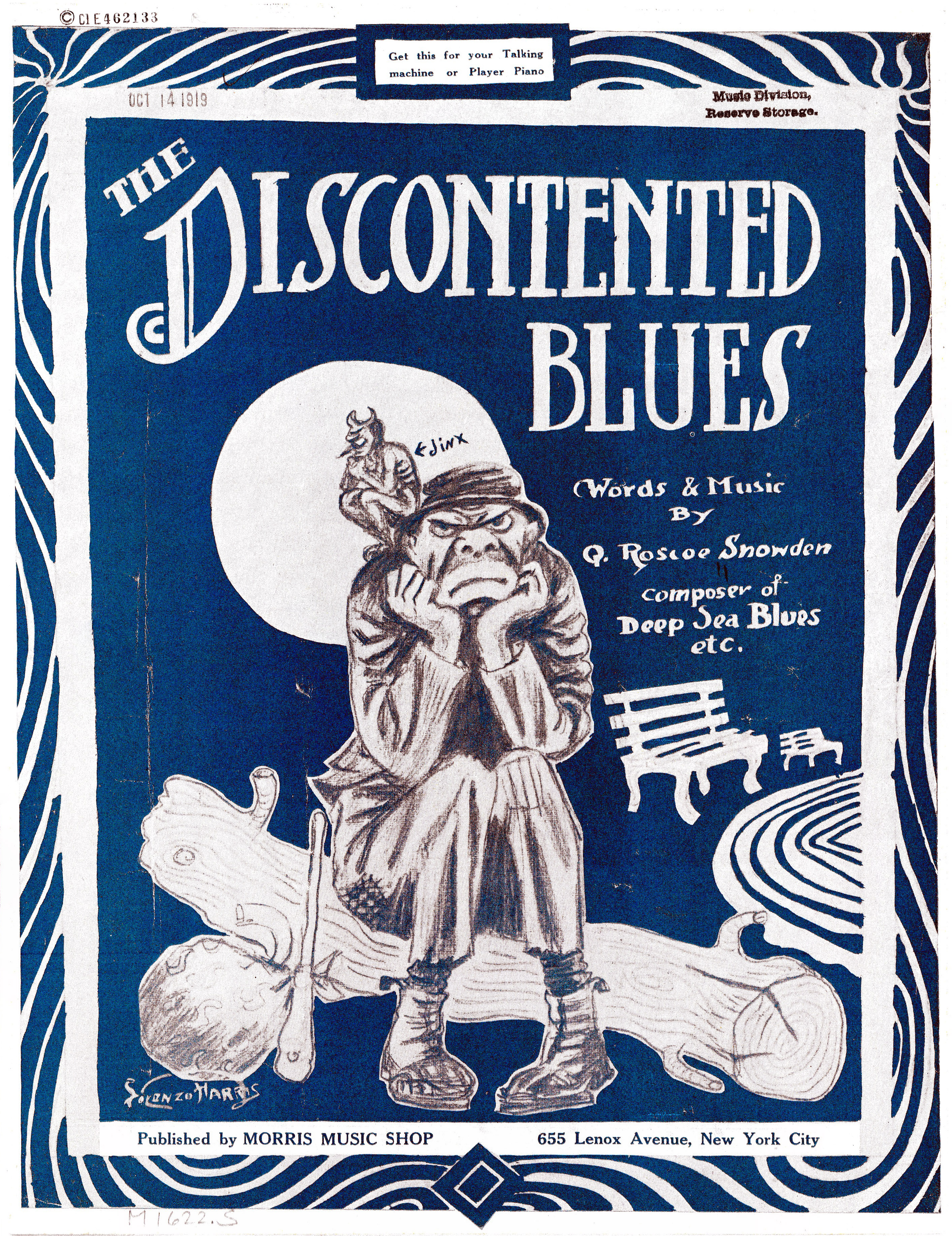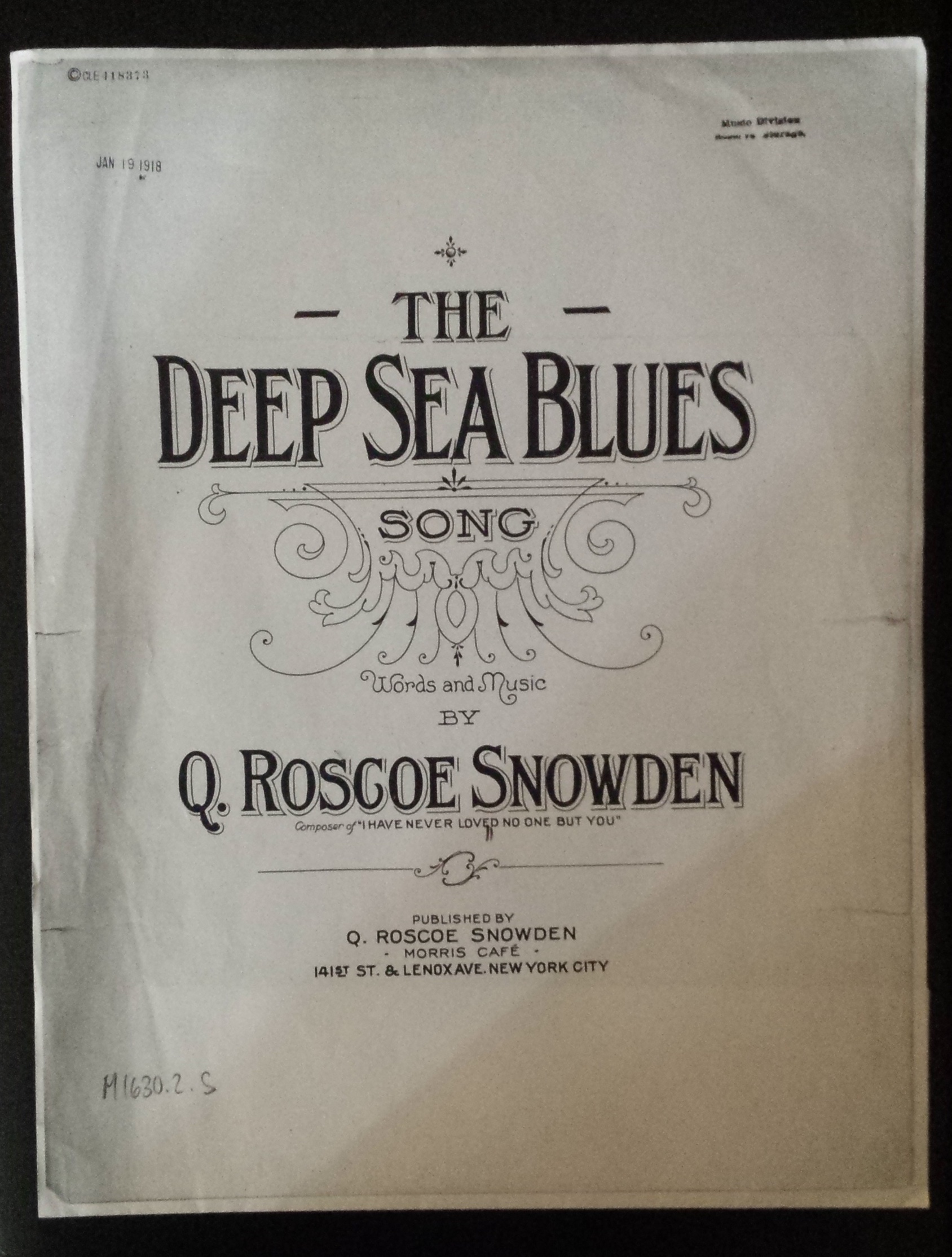I had read about "The Emperor Jones" in Scott Brown's bio of JPJ, but I had never seen it until now. I think we should start with the documentation so far:
1) Scott Brown's book says baldly (p. 222) "In 1933, he also appeared in the film "The Emperor Jones." Then on p. 277, he writes:
"Several sources indicate that James P. Johnson composed the score for this film, which starred Paul Robeson. The Exhibitor's Campaign Book distributed by United Artists to promote the film states: 'Rosamond Johnson, best known arranger of real Negro folk songs, engaged to arrange and direct the music for "Emperor Jones" . . . The entire musical arrangement was handled in splendid style by Rosamond Johnson.' Johnson appears in the film as pianist in a party scene, but the score was written by Rosamond Johnson."
2) What does it say on the film credits? It says "Incidental Music Composed and Directed by Frank Tours", and on the next level of credits, "Vocal Arrangements by J. Rosamond Johnson". Watching the entire film, one realizes that the vocal arrangements are indeed central to the score and the action of the film - the opening sequence in a rural Baptist church in Georgia, the party scene we are discussing, with a female vocal group singing "St. Louis Blues", and the chain gang sequence in which Robeson sings are all crucial.
Who was Frank Tours? Well, Frank Edward Tours was born in England, Sept. 1, 1877 and died in Santa Monica on Feb. 2, 1963. He is buried in Westwood Memorial Park in Los Angeles, and according to Find-A-Grave, his burial plot is east of Marilyn Monroe's. He was musical director on over 40 films according to the Internet Movie Database.
I did some research on Tours on ancestry.com today. His passport application in 1923 [the photo from which is shown here] says that he came to the U.S. from the UK in 1910, and his application for naturalization says that he arrived on Oct. 22, 1910. He is listed as being 156 lbs, 5' 8" tall, with brown hair and blue eyes. When he arrived in the US, his occupation was listed as "music professor". Within a couple of weeks of his arrival, he swore that he was not a polygamist nor an anarchist, renounced his allegiance to King George of England and applied for naturalization, which he was granted in 1917. In that year, his draft card shows that he was musical director at the Century Theater (a Shubert theater) in NY, and that the person he listed as his contact was his mother, Mrs. Berthold Tours, back in London. (His father Berthold, who had been born in Holland, was dead by this time.) By a coincidence, at this time Tours is living in Douglaston, Long Island, which is where James P. Johnson listed his job as a 'piano player' as being located. Is it possible that Tours met JPJ when Johnson was working at Douglaston?
Though Tours has not yet been located in the 1920 Federal Census, he shows up in the 1925 New York State census, since 1920 married to Helen, who was 17 years younger than Frank, and father of a few daughters, and living in N. Tarrytown, Westchester, north of NYC. A number of the early sound movies in the late 1920s were filmed on Long Island, and evidently Frank found employment in that burgeoning industry. Perhaps the film that he worked on that is most famous today was the first feature picture by the Marx Brothers - "The Cocoanuts" (1929). This was shot at Astoria, Queens, just east of Manhattan; perhaps to reduce his commute, by the 1930 Census enumeration, Tours has moved back to Long Island, to North Hempstead, not too far from Astoria, Douglaston, or St. Albans, where JPJ moved when he left Harlem in the early 1930s and resided for the rest of his life. Tours listed his employer in 1930 as "Famous Players" - evidently he hadn't quite kept up, as the Astoria studios were a production facility of Paramount (which originally had been Famous Players, then Famous Players-Lasky, and called Paramount since about 1927).
As did a lot of the artists who worked in the early sound movie business, at some point between 1935 and 1940, Tours moved to Los Angeles, where he continued to labor in the music department of the film industry until the early 1940s, when he evidently retired in his 60s. Tours' youngest son Frank Jr. (1927-2004) was in the horse racetrack management business, while his other son Elliott (1926-) is probably still living in northern California.
Now, let us examine the piano music in "The Emperor Jones" a little more closely.
When the piano is first heard, indeed it's an intro in D minor, but the hands in the closeup are clearly not playing what we are hearing. Instead the hands settle onto an E major chord, while the sound track is an A major chord (cadence at the end of the D minor intro). Next we see and hear girls singing the first strain (verse) of "St. Louis Blues" in the key of D major. The pianist inserts octave fills at the ends of the phrases. Ignoring the action in the foreground, we hear the pianist play a trill leading into the tango (minor) strain of "St. Louis Blues", in D minor. There's a little bit missing from the song, and the next thing we hear distinctly, just as the bad guy parts the beaded curtain, is a cadence onto a C major chord, which acts as the dominant of F, then the chorus of "St. Louis Blues" in the traditional key of F major. This kind of fades out, and the next entrance of the piano is an uptempo strain in A flat major. We hear three 12-bar blues choruses in A flat, the third of which has the melody in the bass line, sounding a bit like one of the trio variations in JPJ's "You've Got To Be Modernistic" piano solo record from 1930. It also reminds me a bit of a rather more obscure composition: "Get Away Big", which J. Lawrence Cook wrote down from the playing of an acquaintance of his named Joseph Hilliard. Cook included it in his "Collection of Modernistic Jazz Arrangements for Piano" (1929). After the three 12-bar choruses, the pianist starts another one, of which we hear about a bar and a half before the scene ends.
No one in this thread so far has remarked upon the most complete bit of piano playing in this film, which occurs between 11:45-13:00 minutes in the film, just after we hear Robeson sing "Little Gal" a cappella. At this point we hear the pianist play several choruses of a tune in A flat, rather reminiscent of JPJ's "A-flat Dream" or his "Walkin' the Bass", under the dialog. (We are all wishing that Robeson and his girlfriend would just shut up for a couple of minutes and let us hear the piano!)
The other bits in the movie in which we hear a pianist, it's accompaniment to a singer. At 18:45 in the movie, we cannot quite see the pianist off the left edge of the frame, and again at 22:30 we hear a singer and a pianist in the background. I think it would be quite hard to conclude anything from these last two bits.
Next, we address the question of whether the pianist we see onscreen in the party scene is indeed JPJ. There are plenty of photos of JPJ in that period (late 1920s-early 1930s) extant. The one in Brown's book, photo insert, page "B", top, labeled "Johnson outside his home, late 1920s", "Photo by Duncan P. Schiedt" shows a lean, balding Johnson holding a fedora. I think it's quite easy to see this as the man we see at the keyboard, unfortunately from the back, in that scene in "Emperor Jones". He looks to his left at 9:48, and we catch a fleeting glimpse of him looking to his right around 9:51 before a guy crossing in the middle background obscures him.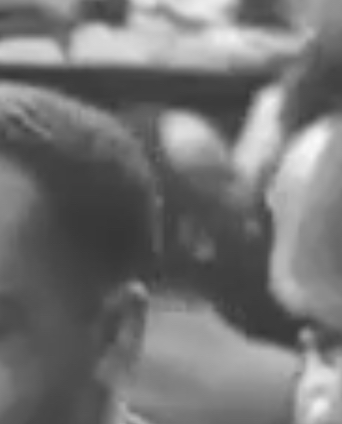
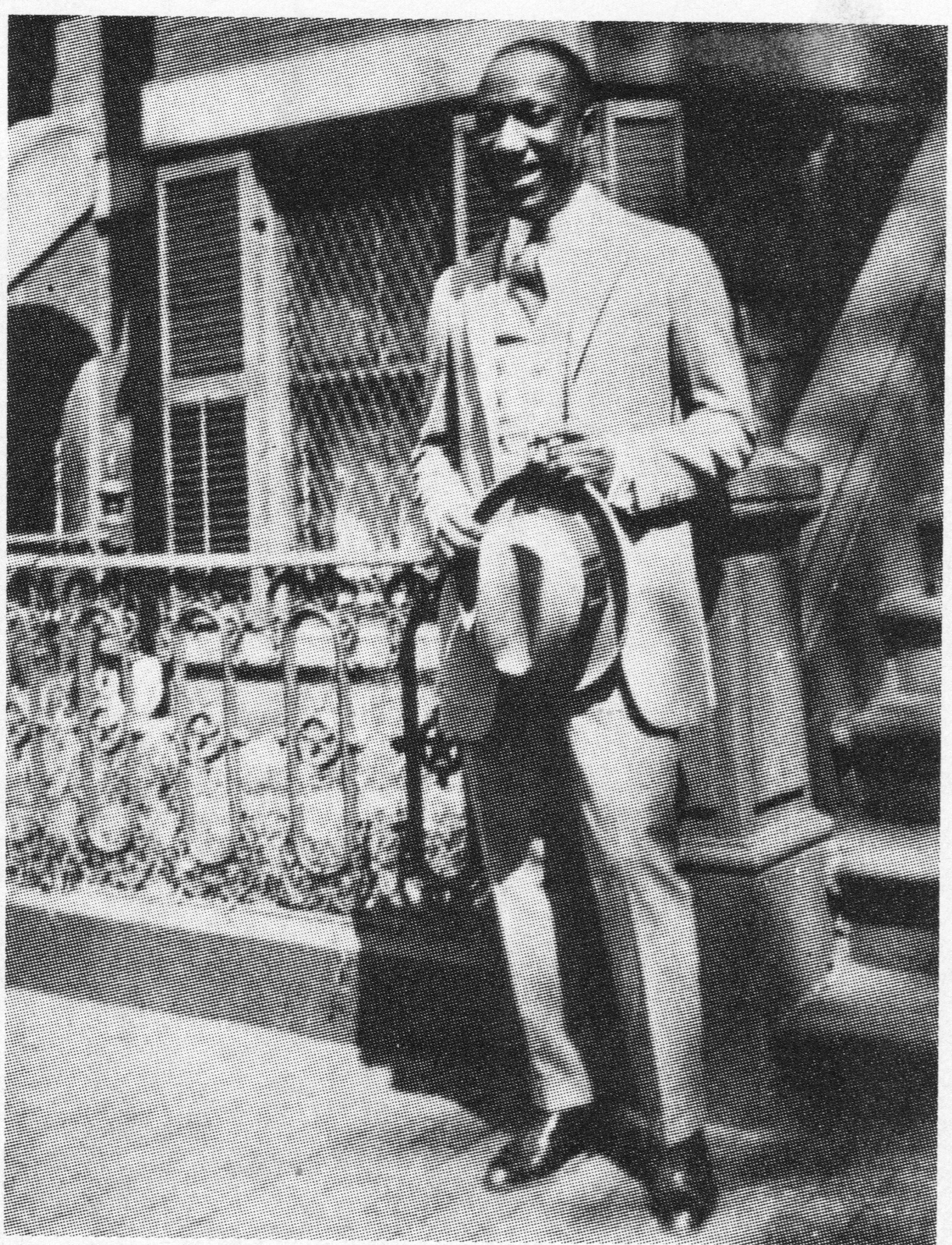 |
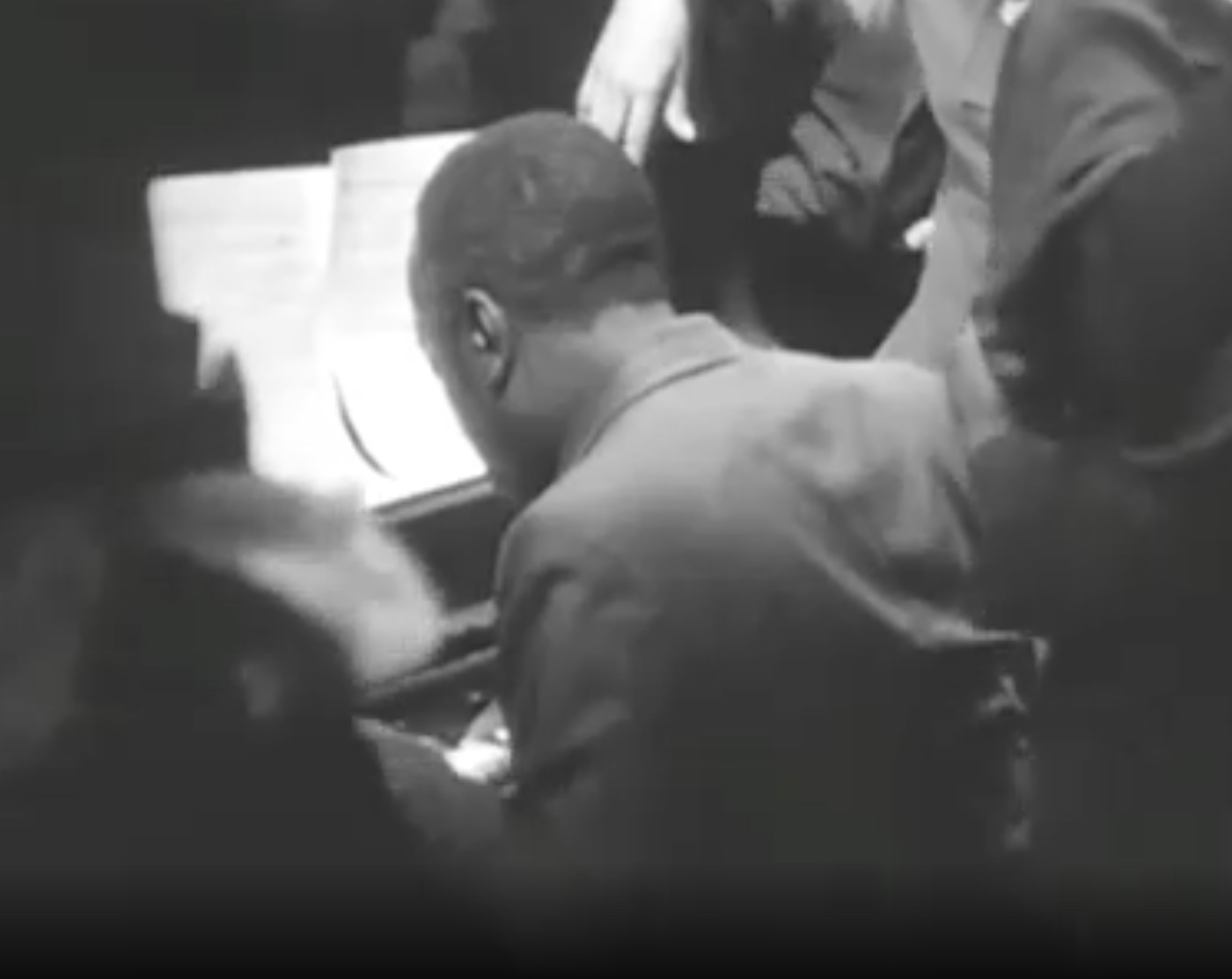
|
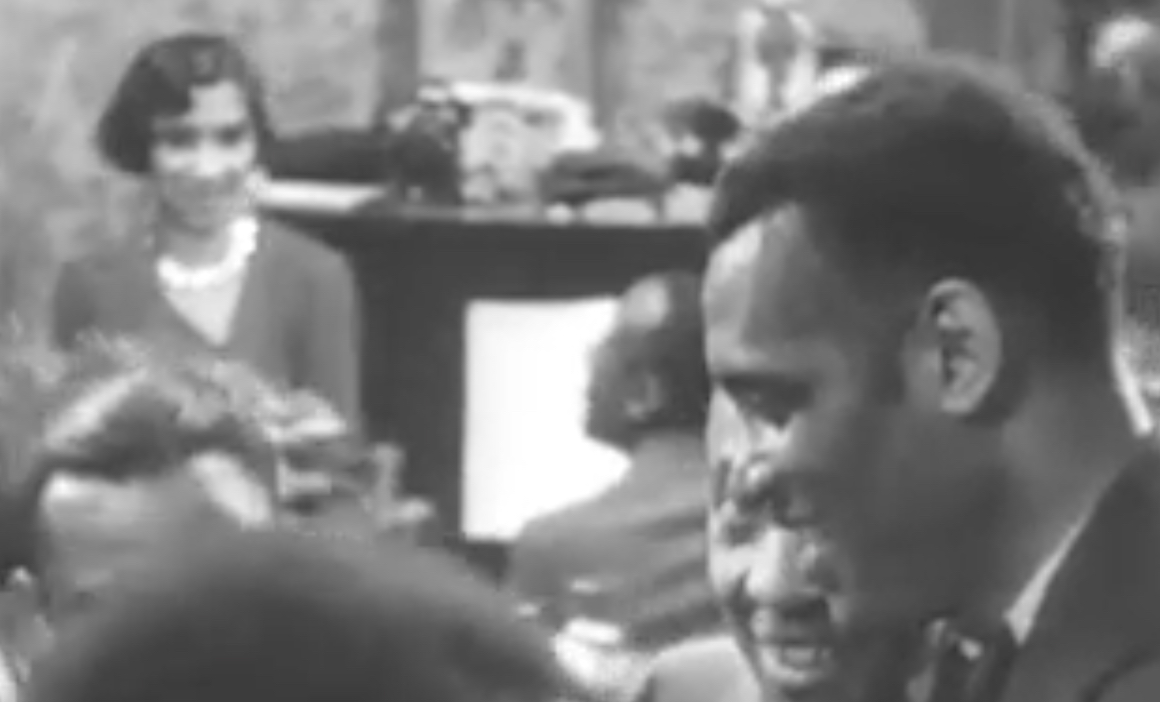 |
About the actions of the pianist: JPJ told Tom Davin in detail about how important it was for a piano 'tickler' to be able to have these studied gestures. "They'd look round idly to see if they knew any chicks near the piano. If they saw somebody, they'd start a light conversation about the theater, the races or social doings -- light chat. At this time, they'd drift into a rag . . . Some ticklers would sit sideways to the piano, cross their legs and go on chatting with friends near by. It took a lot of practice to play this way, while talking and with your head and body turned. . .
Every tickler kept these attitudes even when he was socializing at parties or just visiting. They were his professional personality and prepared the audience for the artistic performance to come. . . . In the old days they really worked at it." We see the pianist in "The Emperor Jones" do exactly some of those things. Another example of JPJ demonstrating this kind of thing is on the Library of Congress interview with Alan Lomax, where JPJ keeps on playing, at times in rather unlikely keys, all the while he's talking.
In that initial closeup of the pianist's hands on the keyboard, we ought to compare the appearance of the hands to the hands in the 1921 photo of JPJ that QRS used (an original print of this from the late Mike Montgomery's collection sold recently on eBay for an astounding sum of money) in the August 1923 advertisement for the black newspapers. The somewhat spidery appearance of JPJ's hands in that photo looks a bit like the hands in that closeup, or at least it seems so to me.
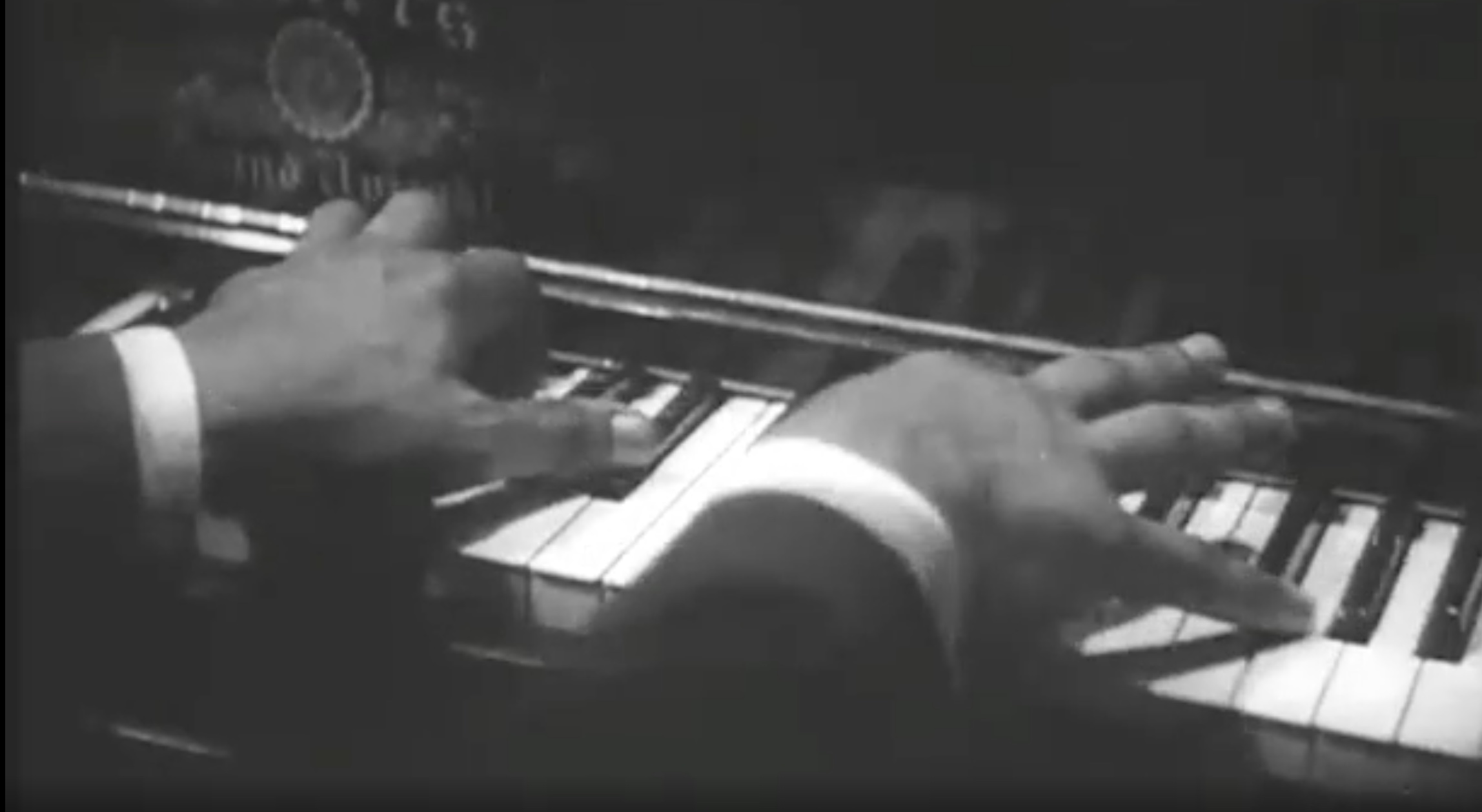
There's another thing that I am surprised nobody's mentioned yet in this thread: we have another appearance of what we are told is JPJ from the back, in 1929, in the bar scene of "St. Louis Blues", the Bessie Smith two-reeler, shot in New York with the same director as "The Emperor Jones", Dudley Murphy. Many online sources say that "St. Louis Blues" was filmed at the same Astoria Studio as "The Emperor Jones", but in fact the credits clearly show that "St. Louis Blues" was shot at the Gramercy Studio (RKO), at 145 East 24th Street. The pianist in the band in the cafe/bar is seen only in the one establishing pan across the left side of the room, at just before 8 minutes in the film. I don't have a good print available of this film, but I would think that a frame enlargement from that moment might be the best we can do to see JPJ in 1929 in that film. One hears the piano intro just before Bessie, seated at the bar, starts into the version of the title tune, with accompaniment by the Hall Johnson (lotta Johnsons indeed - again the vocal arrangements are partly by J. Rosamond Johnson) Choir. Again "St. Louis Blues" is performed in the traditional key of F. Can someone come up with a frame enlargement or two from that shot?
Note added 20210912: I see that the Library of Congress has a very nice print of this film available now, which can be viewed and downloaded at https://commons.wikimedia.org/w/index.php?title=File%3ASt._Louis_Blues.webm . Unfortunately, as far as I can see, even going frame by frame through that pan, Johnson remains obstinately in the background in shadow, and I do not see that he can be seen at all clearly.
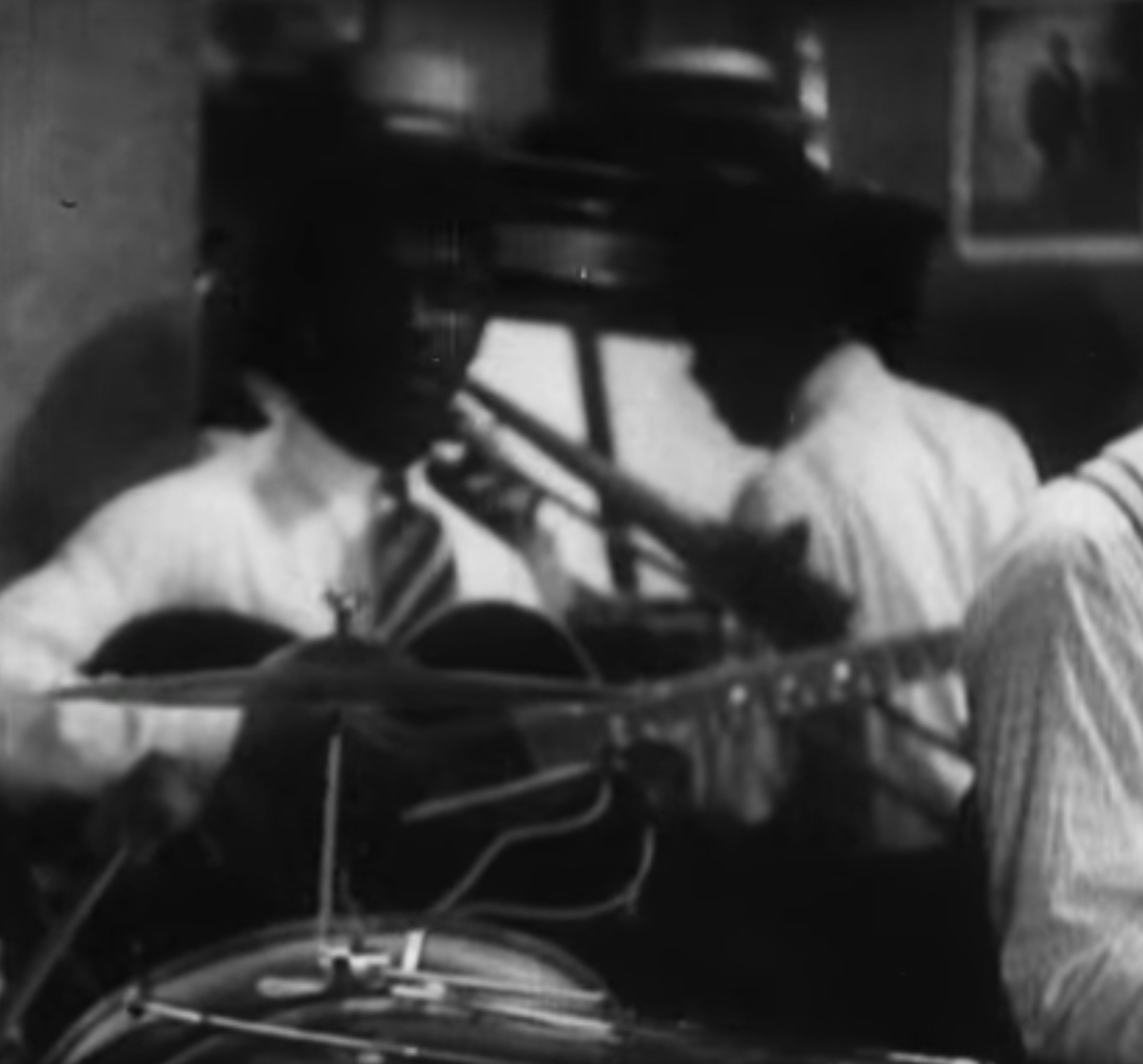
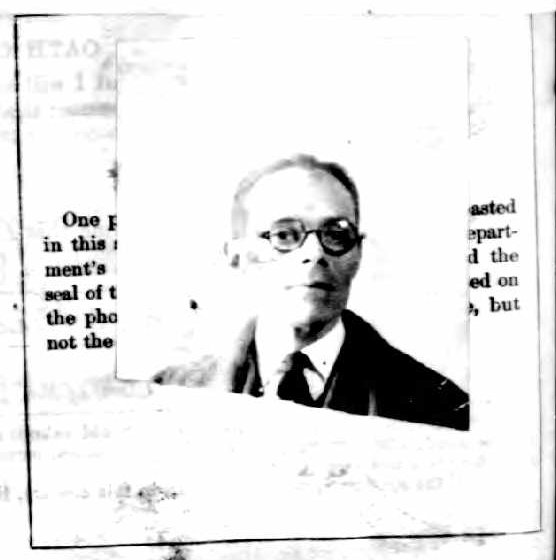
 from Jan Myers.jpg)
